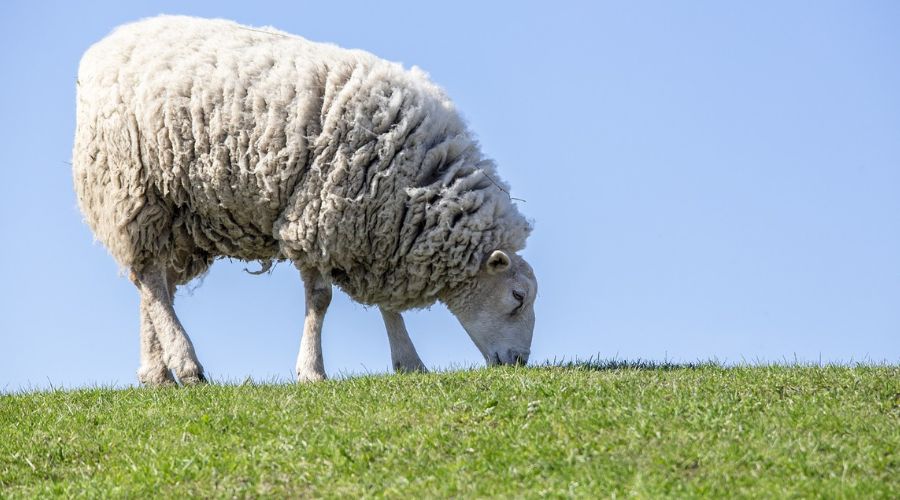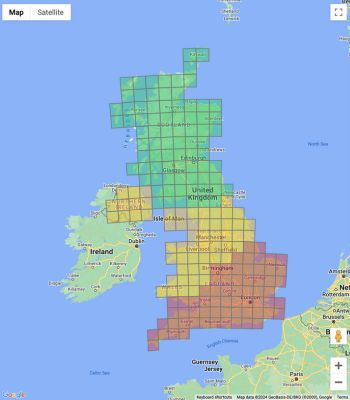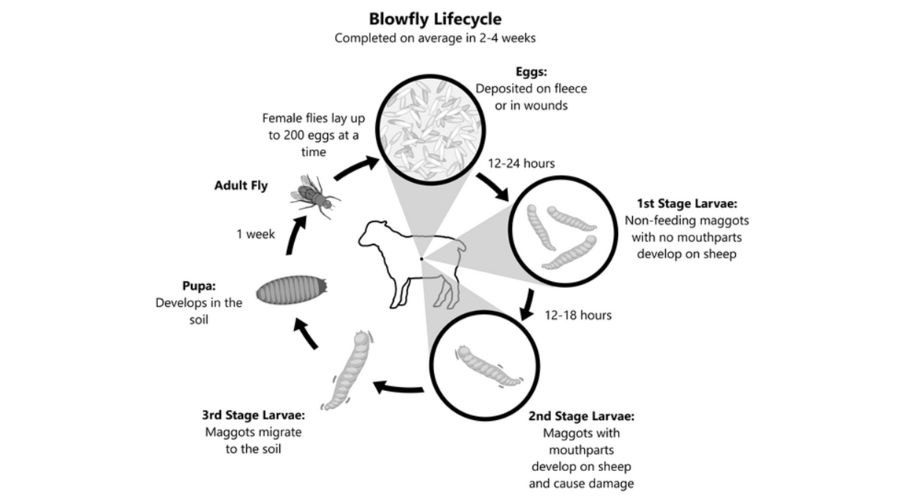Act now as blowfly risk rises across UK
16th May 2024
Action is needed now to prevent blowfly strike as red alerts are being sent to farmers across the South, Midlands and Eastern UK.

Sheep farmers in the areas surrounding red alerts are being urged to stay vigilant and apply a preventative treatment to protect their flock before strike occurs.
Professor Richard Wall, University of Bristol, said the recent week of warmer weather means sheep blowflies will be emerging in the south and south east of England – and strike risk is rising.
Preventative measures should now be in place.
“In addition to treatment, early shearing substantially reduces the strike risk for ewes at the start of the strike season, while getting good early control of gastrointestinal worms will help to reduce the strike risk in lambs going forward through the season,” he said.
“In much of Wales, central and northern England the start of the strike season is imminent and so planning prevention measures should be underway.
“Even in areas where no or low general risk is currently expected, at this time of year risk is never zero because some maggots may have overwintered in unusually warm parts of the environment, allowing them to emerge early.”

Early signs of strike include:
- Irritation
- Nibbling at tail head
- Increased swishing of tails
- Rubbing
- Further signs of discomfort in lame animals.
Early prevention
The true economic impact of blowfly strike is often underestimated with costs of £209 per lamb, and £184 per breeding ewe, being quoted.
Blowfly strike can happen very quickly, with 94% of farmers reported to have been caught out by it.
Matthew Colston, Elanco ruminant technical consultant, says early preventative treatment has been shown to be the most cost-effective strategy to combat the flock health and economic risks due to blowfly strike.
“We recommend protecting your flock by applying an Insect Growth Regulator (IGR) product, such as those in the CLiK range,” he explains.
The CLiK range can provide from eight to 19 weeks of protection, depending on the product, with CLiKZIN offering a meat withdrawal period of just seven days and CLiK and CLiK Extra 40 days.
Mr Colston says with correct application, the Fleecebind formulation in the CLiK range allows the product to spread and bind to the wool grease to give full fleece protection.
Top tips to get the most out of preventive fly control treatments:
- Apply early in the season – every season is different, so check risk forecasts for a guide as when to treat
- Use a CLiK applicator gun with a fan spray nozzle and carefully calibrate it before use
- Apply to a clean fleece – Clip or dag any dirty animals before application
- Apply the product in a band approximately 10cm wide (holding the gun approximately 45cm from the sheep). Apply the total required dose one quarter at a time, using the four-stroke method
- Take care to overlap each stroke and ensure it is down the centre of the back to allow CLiK’s Fleecebind formulation to evenly spread over the fleece to achieve full protection.
Sign up to Blowfly Watch
Elanco’s Blowfly Watch alerts give farmers a heads up on when to apply a preventive treatment before cases occur. Farmers can also report cases of strike on the Elanco Blowfly Tracker to help alert other farmers to local cases.
Sign up for Blowfly Watch here – www.blowflywatch.co.uk

Read more sheep news.


